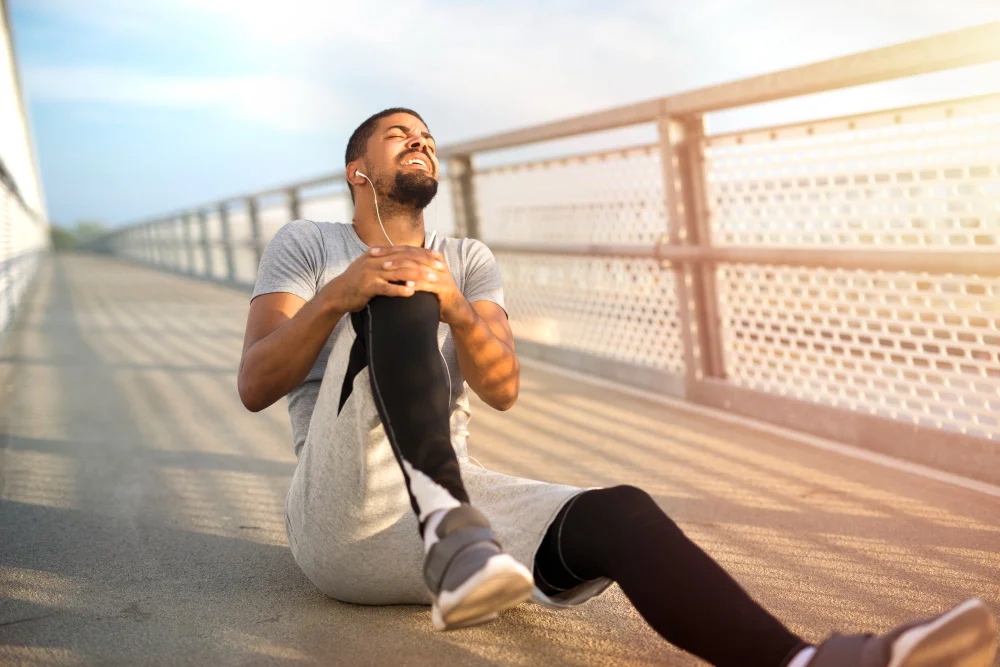“Have you ever climbed a flight of stairs and felt that sharp sting in your knee halfway up?” If you have, you’re not alone.
Knee pain isn’t just a symptom of ageing or sports injuries. It can strike anyone — from long-distance runners and fitness enthusiasts to office workers who sit for hours on end. As a fifth-semester physiotherapy student who has worked with patients struggling to regain mobility, I’ve seen how the right physiotherapy exercises can make all the difference. Knee pain doesn’t have to be a lifelong sentence. With the right approach, it can be managed—even reversed.
In this article, we’ll dive into physiotherapy-based exercises for knee pain, offering both clinical and real-world insights, so you leave not just informed, but empowered.
Why Physiotherapy for Knee Pain Works
Physiotherapy addresses the root cause of knee pain rather than just masking the symptoms. A study published in the British Journal of Sports Medicine found that structured exercise therapy significantly reduces pain and improves function in patients with knee osteoarthritis.
Dr. Harriet Smithe, a consultant physiotherapist at the Royal Orthopaedic Hospital in Birmingham, explains: *”Exercise promotes blood flow, strengthens supporting muscles, and improves joint stability. That’s a winning combination for knee rehabilitation.”
From my experience during clinical rounds, I noticed that patients who stuck to their exercise regimens improved far quicker than those relying solely on medication.
Precautions Before Starting Any Knee Exercises
Before you begin:
- Consult a physiotherapist to rule out structural damage like ligament tears or meniscal injuries.
- Use pain as a guide — discomfort is okay, sharp pain is not.
- Warm up your joints with 5 minutes of light cardio (e.g., brisk walking or cycling).
Top Physiotherapy Exercises for Knee Pain Relief
1. Quad Sets
How to do it: Sit or lie flat with your leg straight. Tighten the muscle on the top of your thigh (the quadriceps) by pushing the back of your knee into the floor. Hold for 5 seconds and release. Repeat 10 times.
Why it works: Strengthens the quadriceps without moving the knee joint—ideal for early rehab stages.
Tip from Practice: I once worked with a patient recovering from ACL reconstruction. He began his rehab with quad sets and progressed faster than expected because he was diligent with these basics.
2. Straight Leg Raises
How to do it: Lie on your back with one leg bent and the other straight. Tighten your thigh muscle and lift your straight leg to the height of the bent knee. Lower slowly. Do 3 sets of 10 reps.
Why it works: Builds strength without putting strain on the knee joint.
Real Insight: One of my clinical mentors said, “If a patient can master the straight leg raise early on, we’re already ahead of the curve.”
3. Hamstring Curls
How to do it: Stand and hold onto the back of a chair. Slowly bend one knee, bringing your heel towards your buttocks. Hold for 5 seconds and lower. Do 3 sets of 10 reps.
Why it works: Targets the hamstrings, which stabilise the knee joint.
Common Mistake: Arching the back. Keep your hips level and engage your core.
4. Wall Slides
How to do it: Stand against a wall with feet shoulder-width apart. Slide down into a mini squat, keeping your knees behind your toes. Hold for 5 seconds and rise. Do 3 sets of 10.
Why it works: Strengthens both quadriceps and glutes while training joint alignment.
Personal Note: I often recommend this to friends who complain about “desk job knees” — the ones that ache after hours of sitting.
5. Step-Ups
How to do it: Step up onto a low platform or step using one foot, then bring the other foot up. Step down with the same foot. Do 3 sets of 10 on each side.
Why it works: Mimics daily activities and improves knee control.
Progression Idea: Increase height or add light weights.
6. Clamshells
How to do it: Lie on your side with knees bent at 45 degrees. Keeping feet together, raise your top knee while keeping your pelvis stable. Do 3 sets of 15.
Why it works: Strengthens hip abductors, reducing strain on the knees.
Therapist Insight: Weak hips often lead to knee overcompensation. Strengthen the hips and the knees will follow.
Supporting Strategies Beyond Exercise
- Ice packs after exercise reduce inflammation.
- Supportive footwear can make a significant difference.
- Weight management is critical — every extra pound adds strain to the knees.
Case in Point: A patient of mine with moderate knee osteoarthritis saw a 40% reduction in pain scores after losing 5kg and adhering to a daily exercise plan.
FAQs About Physiotherapy and Knee Pain
How often should I do these exercises?
Daily or every other day is best. Consistency is more important than intensity.
Can I do these exercises at home?
Absolutely. Most require minimal or no equipment.
How soon can I expect results?
Mild pain may improve in 2–3 weeks. Chronic conditions may take longer.
Should I use a knee brace?
Only if recommended by your physiotherapist. Overuse can weaken supporting muscles.
Final Thoughts: Healing Starts with Movement
Knee pain can be discouraging, but it doesn’t have to derail your life. The right physiotherapy exercises, done with care and consistency, can rebuild strength, restore function, and relieve discomfort.
I always tell my peers and patients: “You don’t have to run a marathon—you just have to take the first step.”
What about you?
Have you tried any of these exercises, or do you have a personal knee recovery story? Share your thoughts in the comments below—you might just inspire someone else to get moving.
Further Reading:




